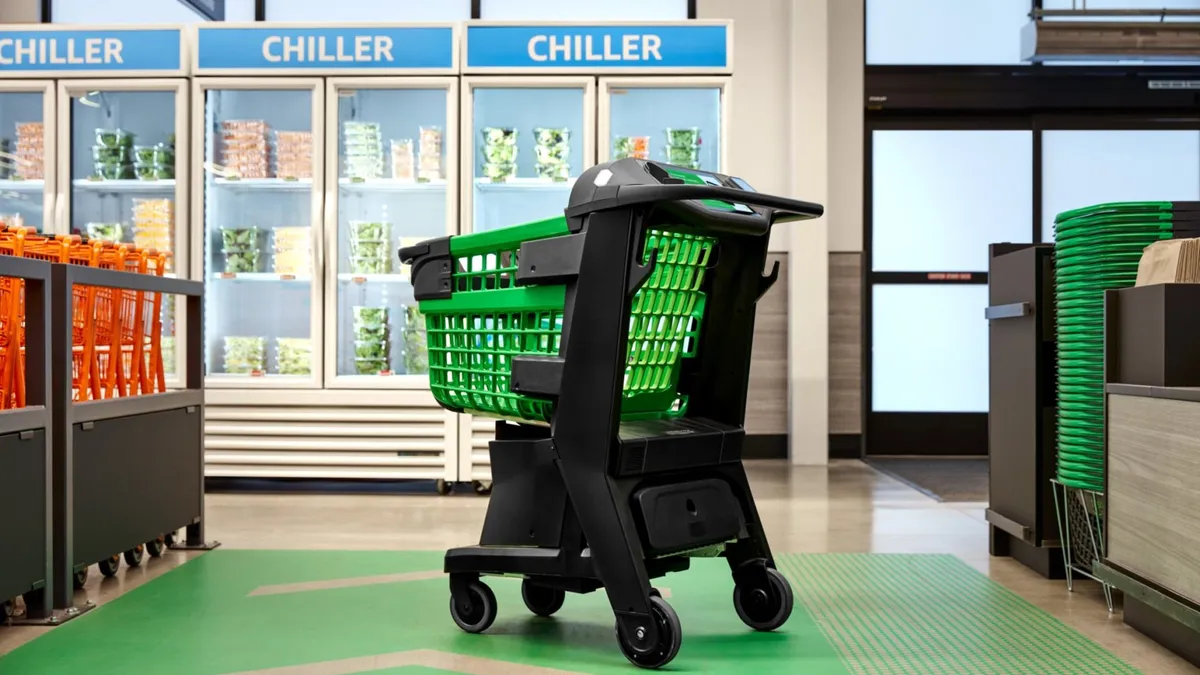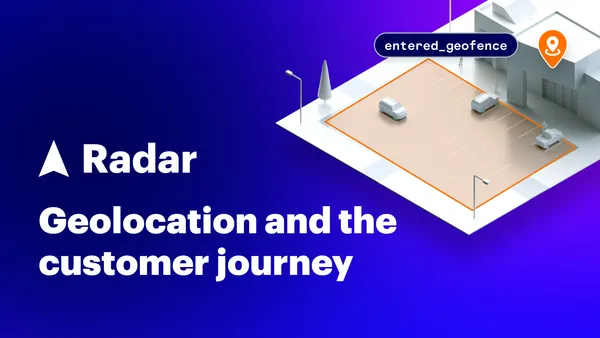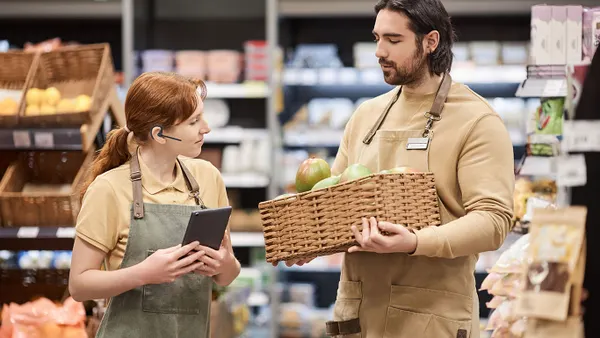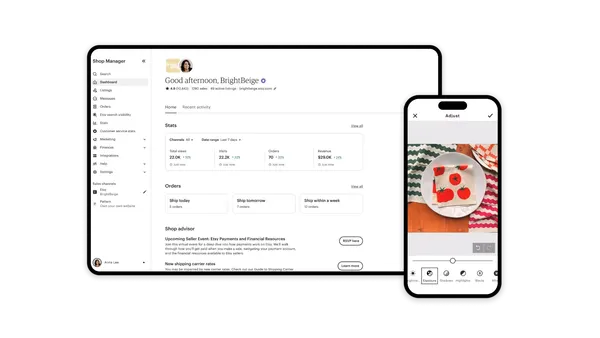Dive Brief:
- Amazon has unveiled the Dash Cart, a shopping cart built for small and medium-sized trips that automatically logs products placed inside and processes payment as shoppers leave the store. The cart will roll out at the company's soon-to-open Woodland Hills, California, grocery store this year.
- The Dash Cart is equipped with computer vision cameras as well as weight sensors that identify products as shoppers place them inside. Shoppers scan a special QR code, located inside the Amazon app, to start using the cart, and walk through a special Dash Cart lane at the front end of the store when finished. The system logs the purchase using the credit card shoppers have on file with Amazon and emails a receipt.
- The cart, which is designed to hold two grocery bags, can also integrate Alexa shopping lists and scan coupons.
Dive Insight:
Amazon hasn't said much about its forthcoming grocery store chain, but one thing it has stated for months is that those stores will utilize conventional checkout lanes rather than the cashier-free experience of its Amazon Go stores.
What it didn't say is that its grocery stores are also putting Amazon Go technology inside specialized shopping carts.
The Dash Cart is the latest example of how Amazon is using its technology muscle to stand apart from established retail competitors as it builds out its grocery and convenience store footprint. And it comes at a time when quick, contactless shopping is of the utmost importance to consumers. While other retailers are offering scan-and-go programs that require shoppers to scan each product barcode as an alternative to conventional checkout lanes, the Dash Cart recognizes each item as it's placed inside the cart, flashing a white light and emitting a beep to indicate the item has been logged (an orange light means "try again").
As with Amazon Go, shoppers can put any products they don't want back on the shelf and the cart will note the change. The Dash Cart also integrates shopping lists and checks off each item as its placed inside, eliminating another task for consumers.
The system isn't completely frictionless. Shoppers have to punch in PLU codes for any fresh produce they select and confirm the weight on the cart's screen. It also isn't available for more than two bags of items — for which customers will presumably use the store's conventional checkout lanes.
But the Dash Cart is Amazon's best attempt at approximating the Amazon Go experience inside a conventional grocery store. The company's Go stores opened in 2018 and recently launched a grocery offshoot called Go Grocery. The technology, which uses ceiling-mounted cameras and shelf weights to identify shoppers and every item they purchase, is only feasible inside small-scale stores right now. Amazon Go Grocery, which opened in February in Seattle's Capitol Hill neighborhood and automatically recognizes packaged items as well as loose produce and baked goods, has 7,700 square feet of retail space.
Because the main components of Dash Cart are the smart carts and a special checkout lane, the system appears to be portable. That means Amazon could bring the smart carts to its roughly 500 Whole Foods stores, which have struggled to excite shoppers since the e-commerce giant took over in 2017. Amazon could also effectively license the technology to other retailers, as it's doing with its cashierless tech.
Amazon isn't the only company racing to offer advanced checkout-free technology. Firms like Grabango and Trigo Vision are replicating the Go experience for retailers while startups Veeve and Caper offer their own smart carts. Veeve, started by two former Amazon engineers, offers a similar login and product scanning system to the Dash Cart.
Walmart has also made faster checkout a priority at its stores. The company has rolled out various pilots, including a system that lets shoppers check out with handheld-toting associates, and will reportedly make its Scan & Go mobile checkout program, which it previously launched and then discontinued, a perk as part of its forthcoming Walmart+ loyalty program. Sam's Club, which has had more success with Scan & Go, has been testing a computer vision component that automatically recognizes products using customers' smartphone cameras.
Although Amazon has only named one Southern California grocery store for its Dash Cart introduction, the company will look to scale it across its forthcoming chain. So far, Amazon has confirmed five locations for its yet-to-be-named grocery stores — two in Southern California and three in the Chicago suburbs. Reports have also named Seattle and Washington, D.C., as store locations, and earlier this year Amazon purchased the leases on two former Fairway Market stores in March. Amazon also said it will open additional Go Grocery stores in Redmond, Washington, and Washington, D.C.
Amazon reportedly planned to open its Woodland Hills store earlier this year, but the store has been repurposed as an online order fulfillment center during the COVID-19 pandemic.















